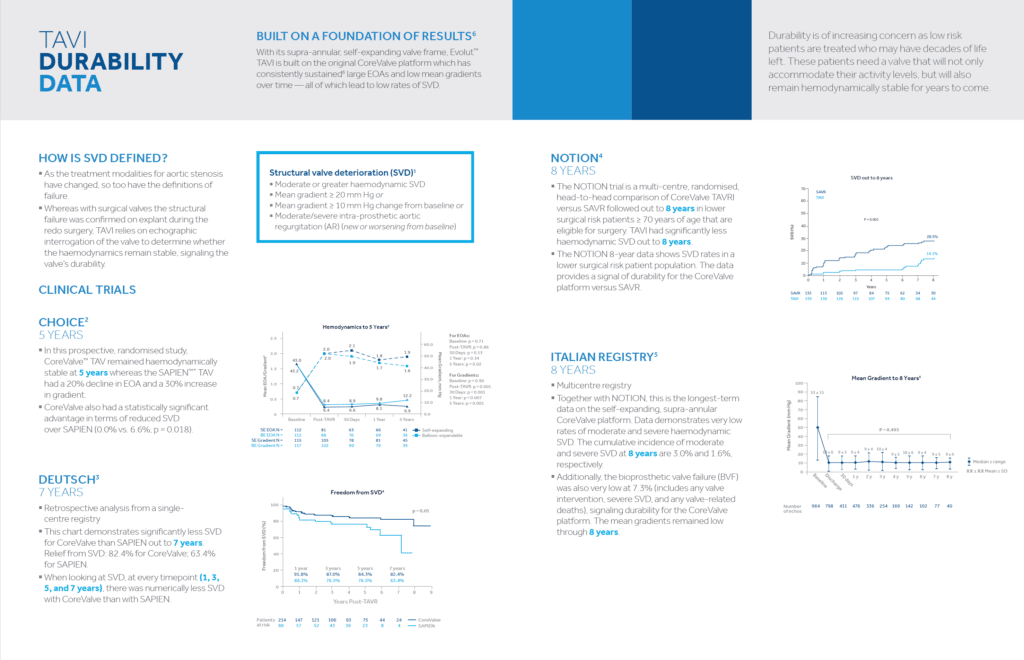In this week’s episode of Heart HQ – a cardiology podcast, Dr Peter Larsen and Dr Stuart Butterly discuss Transcatheter Aortic Valve Implant (TAVI).
Traditionally, open heart surgery has been the main treatment option for aortic stenosis (where the aortic valve has narrowed and doesn’t work properly). However TAVI is a newer, far less invasive alternative.
The TAVI device sits inside a stent, attached to the end of the catheter. The catheter is carefully passed through the femoral artery (the main artery at the top of the leg) up to the heart. Sometimes alternative access may be used such as the right subclavian artery in the neck/shoulder.
X-rays and a transesophageal echo (an ultrasound probe inserted into the oesophagus) are used to help visualise the positioning of the catheter and device.
Once the TAVI is in the correct position, the new valve will slowly be released and will “self expand”. Alternatively, a small balloon may be used to open up the new valve.
In the podcast, Peter and Stuart discuss a recent patient’s experience with TAVI and as well as 5 things to consider when it comes to the procedure.
You can listen to this episode here.
Here are the show notes for this episode:
Here is the TAVI durability data that Stuart discussed (you can download this file below):

(Source: ‘Engineered for Today and Tomorrow – Medtronic TAVI Platform’, medtronic.com.au)
You can also read more about the TAVI procedure here.
Enjoyed this podcast?
Remember to follow us on Instagram, Facebook and LinkedIn. You can also sign up to our GP newsletter here.
If you enjoyed this podcast, we’d also love for you to leave a review on Apple Podcasts and share it with your colleagues, friends and family.
If you’d like to get in touch with us about our podcast, you can email us at [email protected]
Thanks for tuning in!